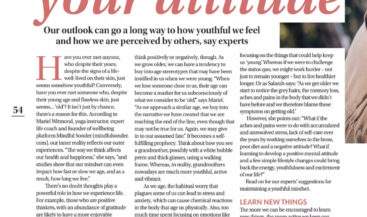Stress is something we are all familiar with. It is the mental and physical state we feel when we experience something challenging or even threatening to our wellbeing. Our body has a stress response system that represents the parts of the brain, organs and hormones that come to work together in order to combat stress. In order to understand our ability to tackle stress and build resilience in times of adversity, it is important for us to know how the brain works and what tools are at our disposition to tackle the mental and physical impacts of stress.
The amygdala, a brain structure the size of a small kidney bean, is crucial in our attempts to decode our emotions. Whenever something stressful happens, the amygdala is the first port of call that sends a distress signal to the hypothalamus, which in turn connects to the rest of our body through the automatic nervous system (sympathetic and parasympathetic). Our Fight or Flight reactions stem from this connection that is so efficient, our brain’s visual centers often can’t keep up or fully process what is going on. As a result of this, the brain can often bypass the prefrontal cortex – the most developed part of the brain that helps us to control our emotional responses by processing what is going on.
Psychologist Daniel Goleman called this the “amygdala hijack,” whereby we react to stressful situations without thinking, often resulting in shame for our irrational behaviour. There have even been studies done on animals that proved that during prolonged periods of stress, our prefrontal cortex essentially goes off-line leaving the effects of stress without our ability to adequate process what is going on.
According to Harvard brain scientist Dr. Jill Bolte Taylor, it only takes 90 seconds for us to tune into what we are feeling, identify the emotion, and allow it to go simply by recognizing it. It is in those 90 seconds that a chemical reaction takes place in the body and when we slow down the activity of the amygdala, we calm the brain enough to better understand what is going on and then release it. Without the ability to slow down, we create stories in our heads that recreate the emotion and leave us in an emotional loop.
The 90 Second Rule asks us to identify the emotional reaction, to label it, to sit with it (without judgement or a desire to change it), and then let it go.
“Between stimulus and response there is a space. In that space is our power to choose our response.”
Viktor Frankl
We can choose how we respond to our emotional warning system by bringing more mindfulness into our lives. We know our thoughts determine how we feel, which is why we need to become more aware of those thoughts and the emotional impact they have. If we can alter the thought, we can alter the emotion.
When we face challenging situations, automatic thoughts pop into our heads – spontaneous negative thoughts that often reflect strong beliefs we have about ourselves and our surroundings that we have developed throughout our lives. If we can better identify these thoughts, we can replace them with coping thoughts: I can get through this, I can feel stress without responding to it, I can sit with this emotion and learn from what it is telling me, I am not my thoughts, I am not my emotions.
In addition to this, we can learn to reframe our situation, finding the silver lining and shifting our focus from glass half empty to glass half full. Remind yourself of what you already have, who you are and what your re capable of – finding strengths to help build your self esteem.
Naturally, how we tend to view adversity and the stress those moments cause us will affect how we succeed. This is why learning to create a resilient mindset is so vital. So what do resilient people have in common?
- They don’t allow difficult moments to define them
- They are connected to their emotions and are self-aware
- They don’t listen to their inner critic
- They are able to bounce back
- They are empathetic and compassionate, but do not waste time worrying about what others think.
- They have healthy boundaries
- They ask for help
- They learn from their mistakes
- They are accountable and don’t blame the outside world for what happens to them (victim mentality)
- They are curious and honest
At the very core of resilience is a deep belief in ourselves and that we are a part of something bigger than ourselves. Don’t allow difficult moments, negative thoughts, or hard emotions to define who you are. Transcend the things holding you back in life, knowing all moments are fleeting and within time and space lies choice – and the choice is always yours.





